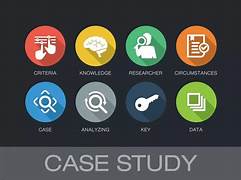The Effects of Traditional Marketing on Ticket Purchases: A Case Study
Introduction
Traditional marketing remains a vital force in promoting events, concerts, and sports matches, despite the increasing reliance on digital strategies. This case study examines how traditional marketing methods—such as print advertising, television and radio commercials, billboards, and direct mail—affect ticket sales for live events. By analyzing a real-world example, we explore the effectiveness of these strategies and their impact on consumer behavior.
Overview of Traditional Marketing in Ticket Sales
Traditional marketing encompasses various offline strategies designed to reach a broad audience. Key elements include:
- Print Media: Newspaper and magazine advertisements.
- Broadcast Advertising: Television and radio commercials.
- Outdoor Advertising: Billboards, posters, and transit ads.
- Direct Mail: Flyers, brochures, and postcards sent to potential buyers.
- Word-of-Mouth and Sponsorships: Partnerships with local businesses and influencers.
Case Study: Traditional Marketing for a Music Concert
To understand the impact of traditional marketing on ticket purchases, we examine a mid-sized concert promotion company that organized a nationwide tour for a popular rock band.
Marketing Strategy Implementation
- Print Advertising: The company placed ads in entertainment magazines and local newspapers.
- Television and Radio Campaigns: Ads ran during prime-time slots, especially on music and entertainment channels.
- Billboards and Posters: Large billboards in high-traffic areas and posters in malls, cafes, and universities.
- Direct Mail: Flyers and brochures were sent to past concert attendees and fan club members.
- Sponsorships and Partnerships: Local radio stations hosted giveaways, while music stores provided promotional posters.
Analysis of Ticket Sales Performance
The company tracked ticket sales over a three-month marketing period. Key findings include:
- Early Ticket Sales Surge: Within the first four weeks, 40% of tickets were sold, largely due to the visibility of billboards and radio promotions.
- Sustained Interest via Print and Direct Mail: As newspaper ads and flyers reached audiences, sales continued steadily.
- Final Push with TV and Radio Spots: In the last two weeks before the concert, an increase of 30% in sales was observed, attributed to increased TV and radio exposure.
Strengths of Traditional Marketing in Ticket Sales
- Broad Audience Reach: Traditional media allows mass exposure, reaching individuals who may not engage with digital channels.
- Trust and Credibility: Consumers often trust print, radio, and TV advertisements more than digital ads.
- Physical Visibility: Billboards and posters serve as constant reminders, reinforcing brand presence.
- Tangible Marketing Materials: Flyers and brochures offer a personal touch, making event information easily accessible.
Challenges and Limitations
- High Costs: Print, TV, and radio advertisements require significant investment compared to digital alternatives.
- Difficult Performance Tracking: Measuring the direct impact of billboards and radio ads on ticket sales is challenging.
- Limited Engagement Opportunities: Unlike digital ads, traditional methods do not allow for real-time interaction with potential buyers.
Comparison with Digital Marketing
While traditional marketing has a significant impact on ticket sales, digital strategies (such as social media advertising, email campaigns, and influencer marketing) provide enhanced targeting and measurable results. A hybrid approach, combining traditional and digital methods, often yields the best outcomes.
Conclusion
Traditional marketing remains a powerful tool for driving ticket sales, especially when used strategically. While it presents challenges such as high costs and limited tracking capabilities, its ability to create brand awareness and consumer trust is undeniable. By integrating traditional techniques with modern digital strategies, event organizers can maximize reach and optimize ticket sales outcomes.


